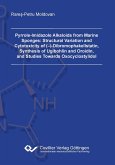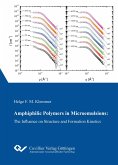In chemical biology, bioactive small molecules are applied to biological systems such as living cells for studying and manipulating biological processes.1 Such a small molecule-based approach for studying biology has several advantages over more classical research strategies such as genetic knock-out studies. The biological effect induced by small molecule modulation is usually rapid and can be spatially and temporally controlled. It is often reversible and conditional as small molecule application can be initiated at any developmental stage of the studied biological system. Moreover, the observed biological effect is tunable by varying the concentration of the small molecule probe. Finally, small molecule probes can be tagged with additional functionalities that allow to accumulate further information in biological experiments. For example, the proper attachment of fluorophores on a bioactive small molecule targeting a protein of interest generates a probe that can directly be employed in imaging applications. Besides these straightforward experimental advantages, small molecule interference has at least one additional conceptual advantage over genetic manipulations. While gene mutations act on the gene-level, small molecules modulate the function of the gene products. Consequently, small molecules interfere at a much more sophisticated and biologically relevant level; accordingly, they are in contrast to genetic studies able to differentiate between different protein forms that result from the same gene, e.g. by alternative splicings or post-translational modifications. Despite these huge advantages of small molecule manipulation of biological systems, the widespread use of chemical biology methods in biological research is limited by an inherent major disadvantage. In order to be feasible, such an approach requires the availability of suitable small molecules that induce a desired biological effect with high selectivity and potency. To date, only a limited number of proper small molecules for a restricted number of protein targets are though known.








